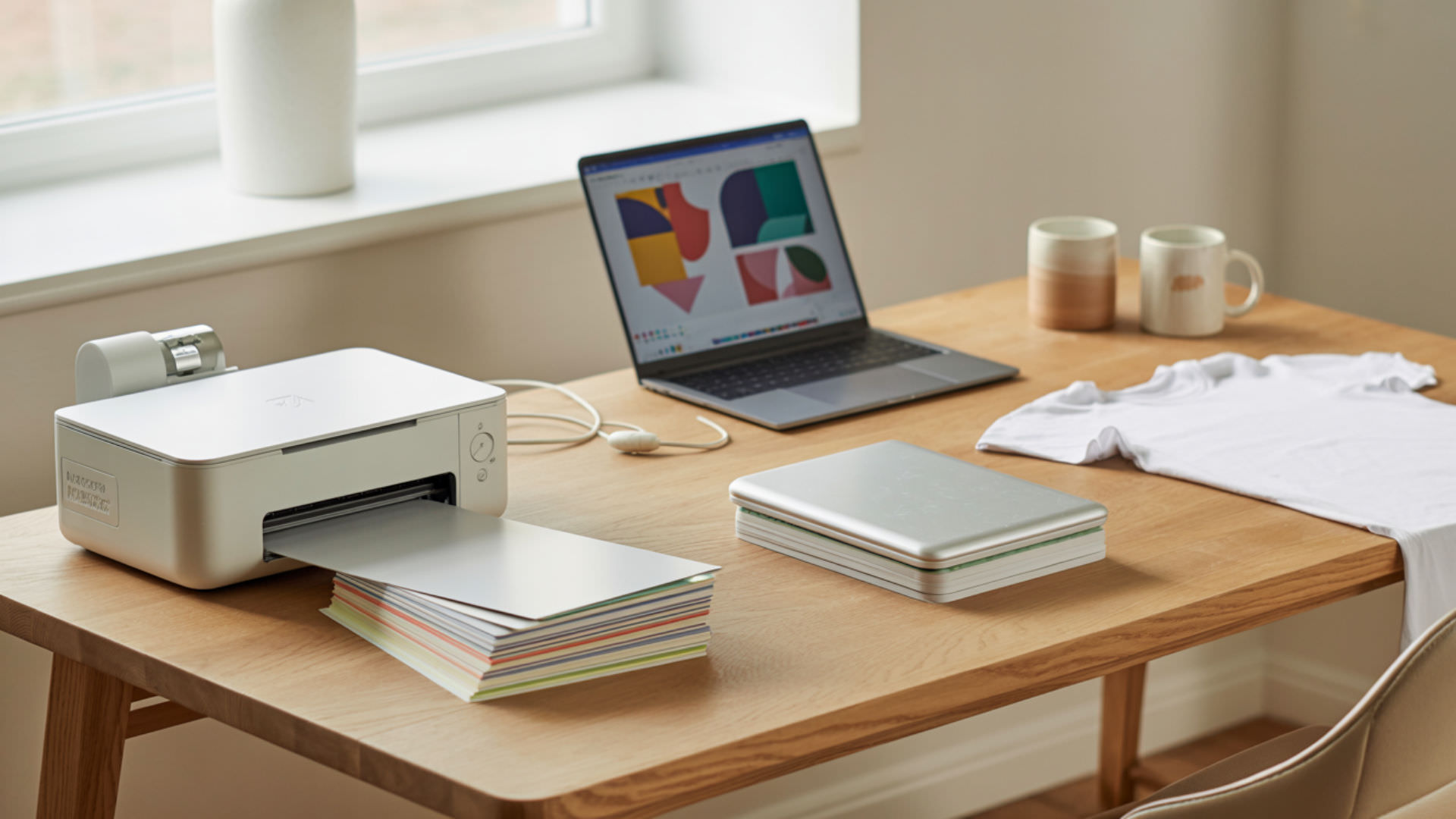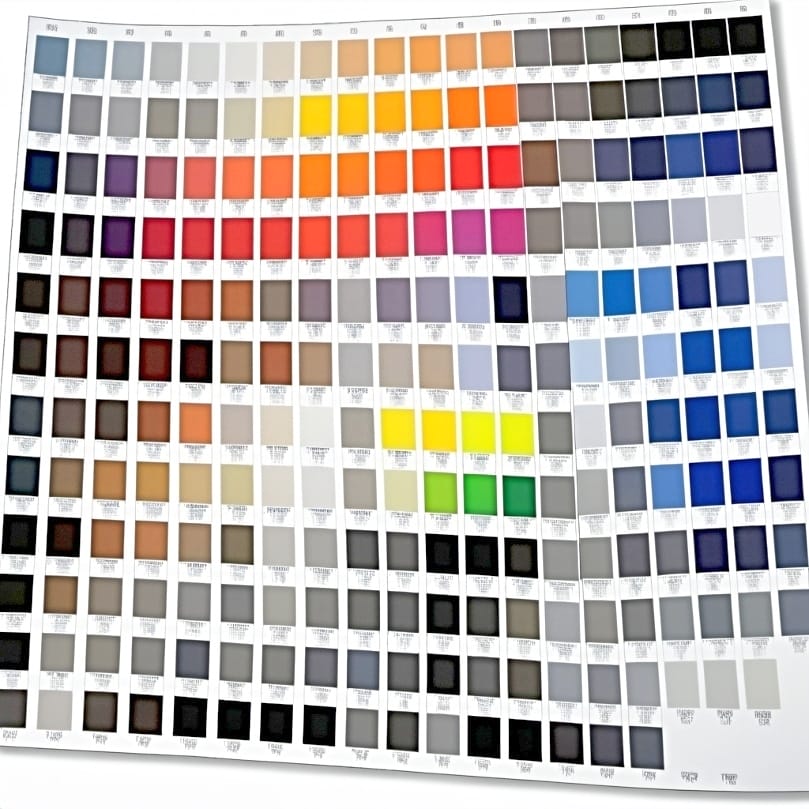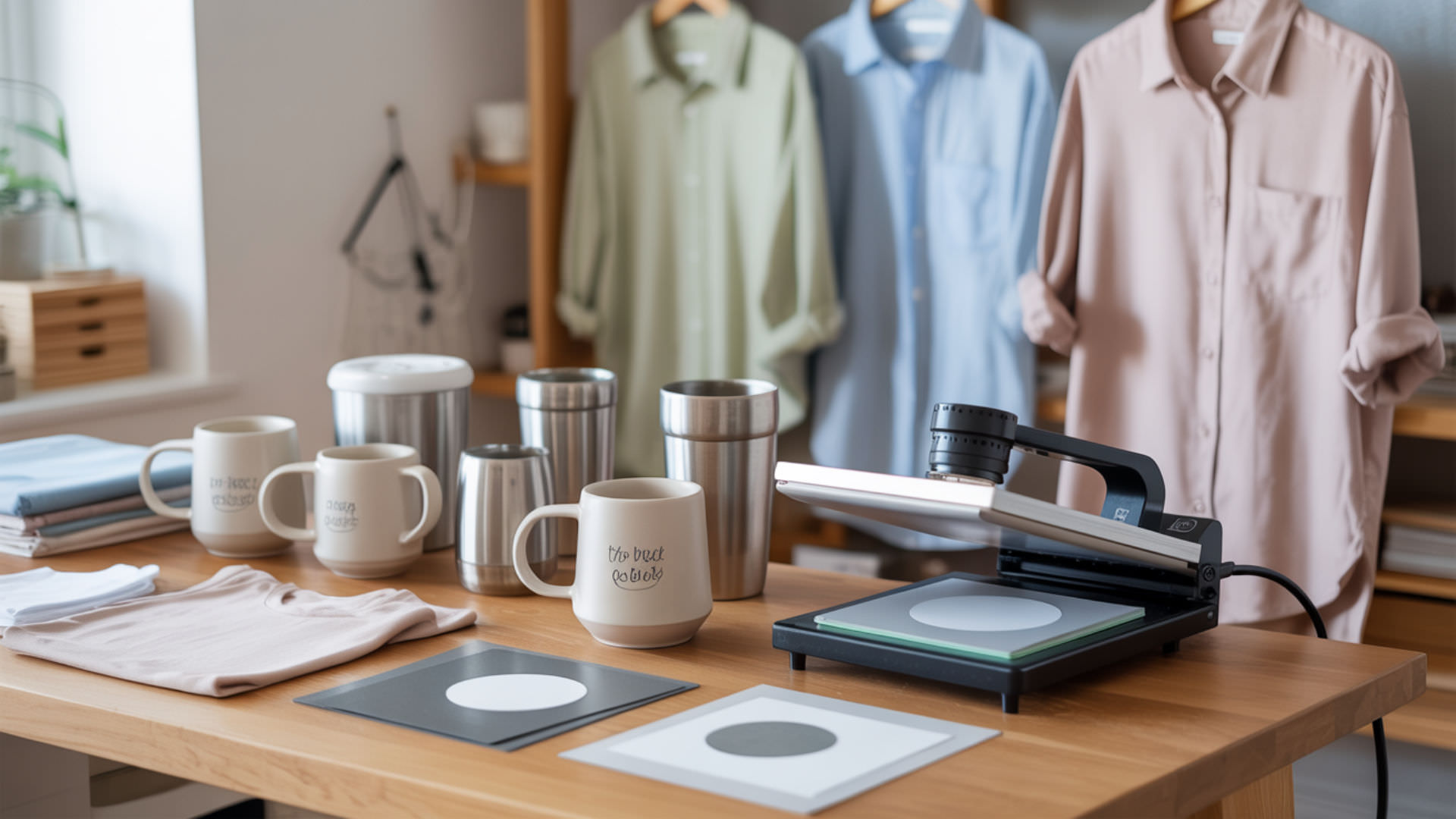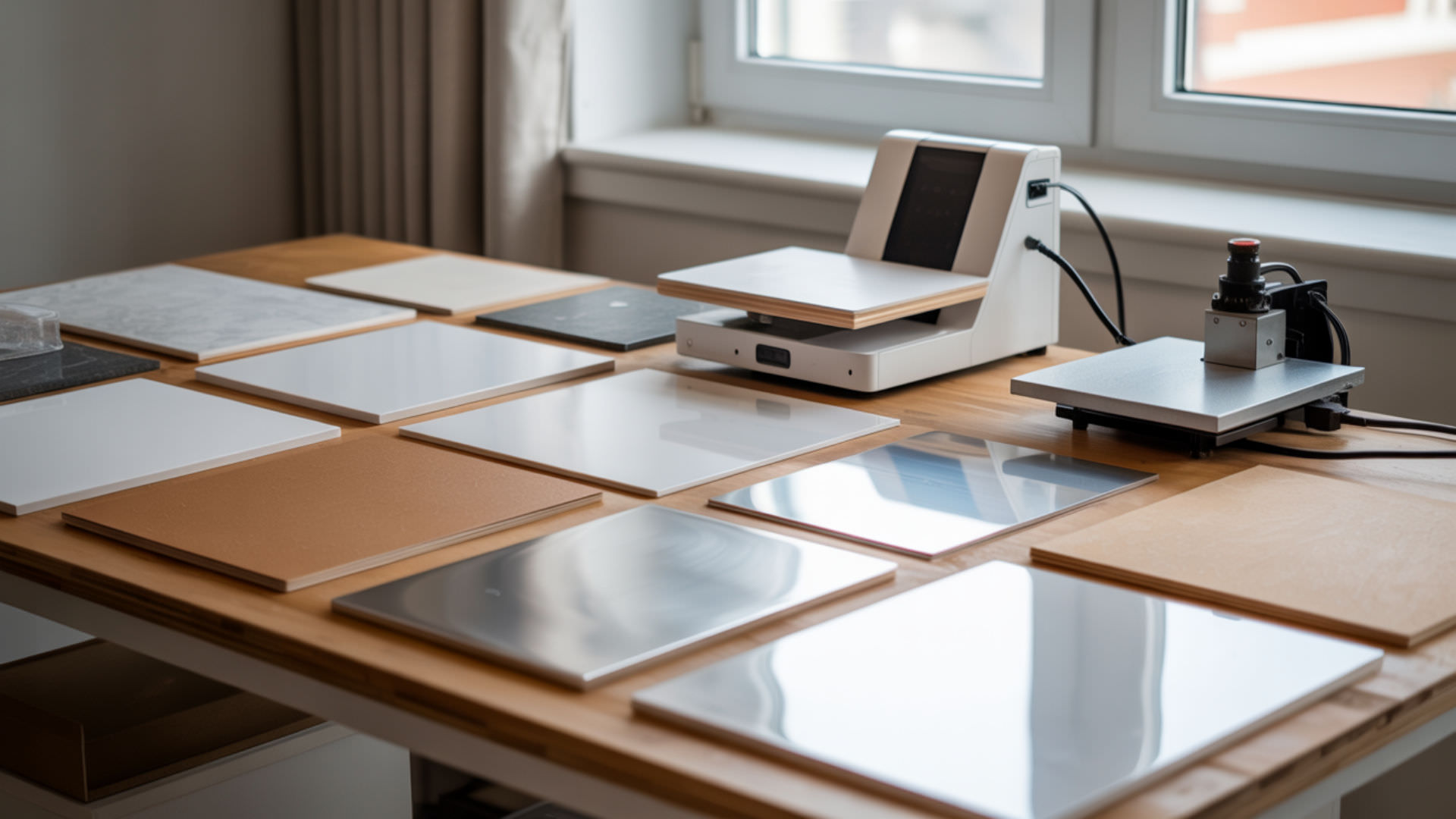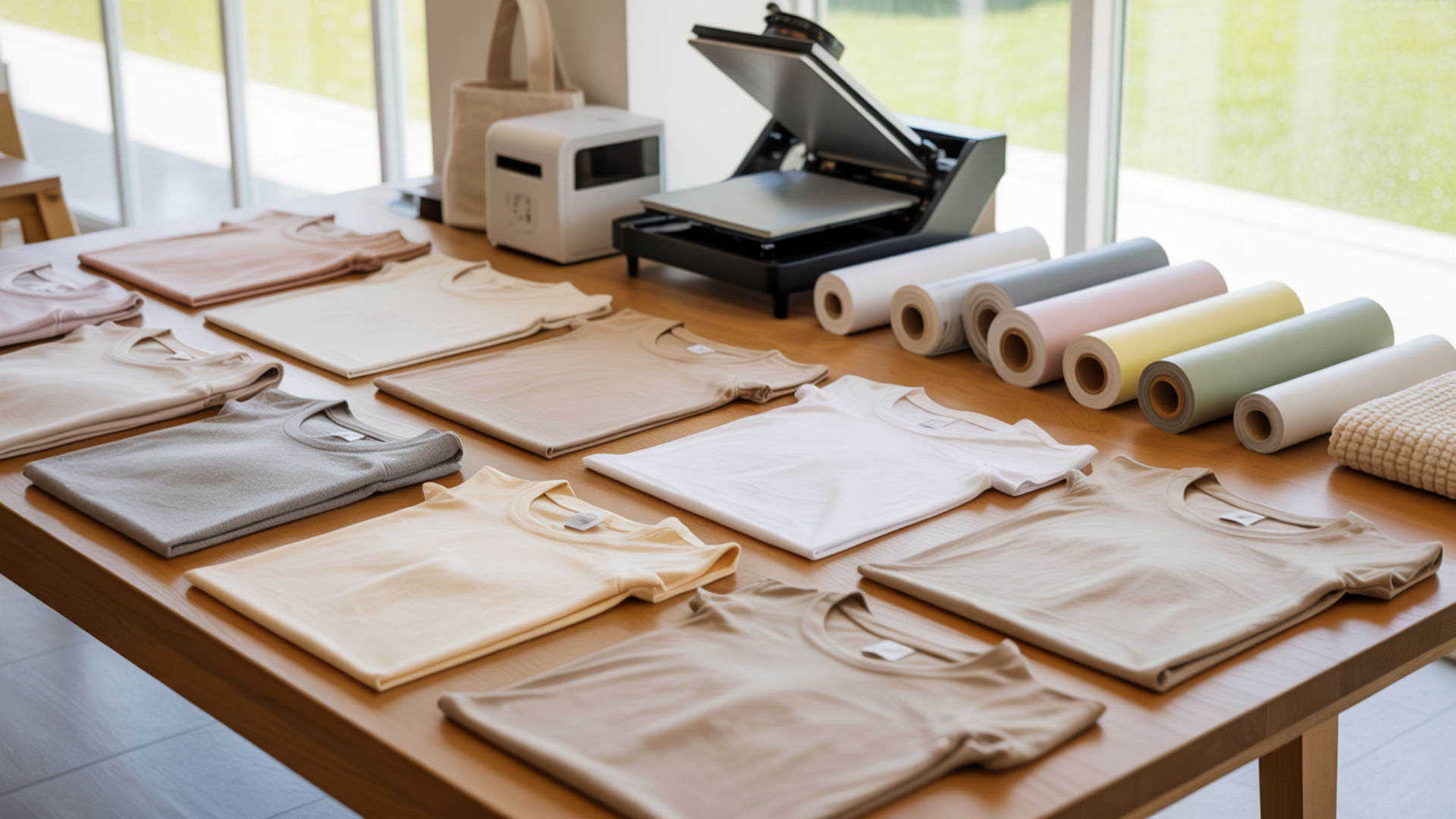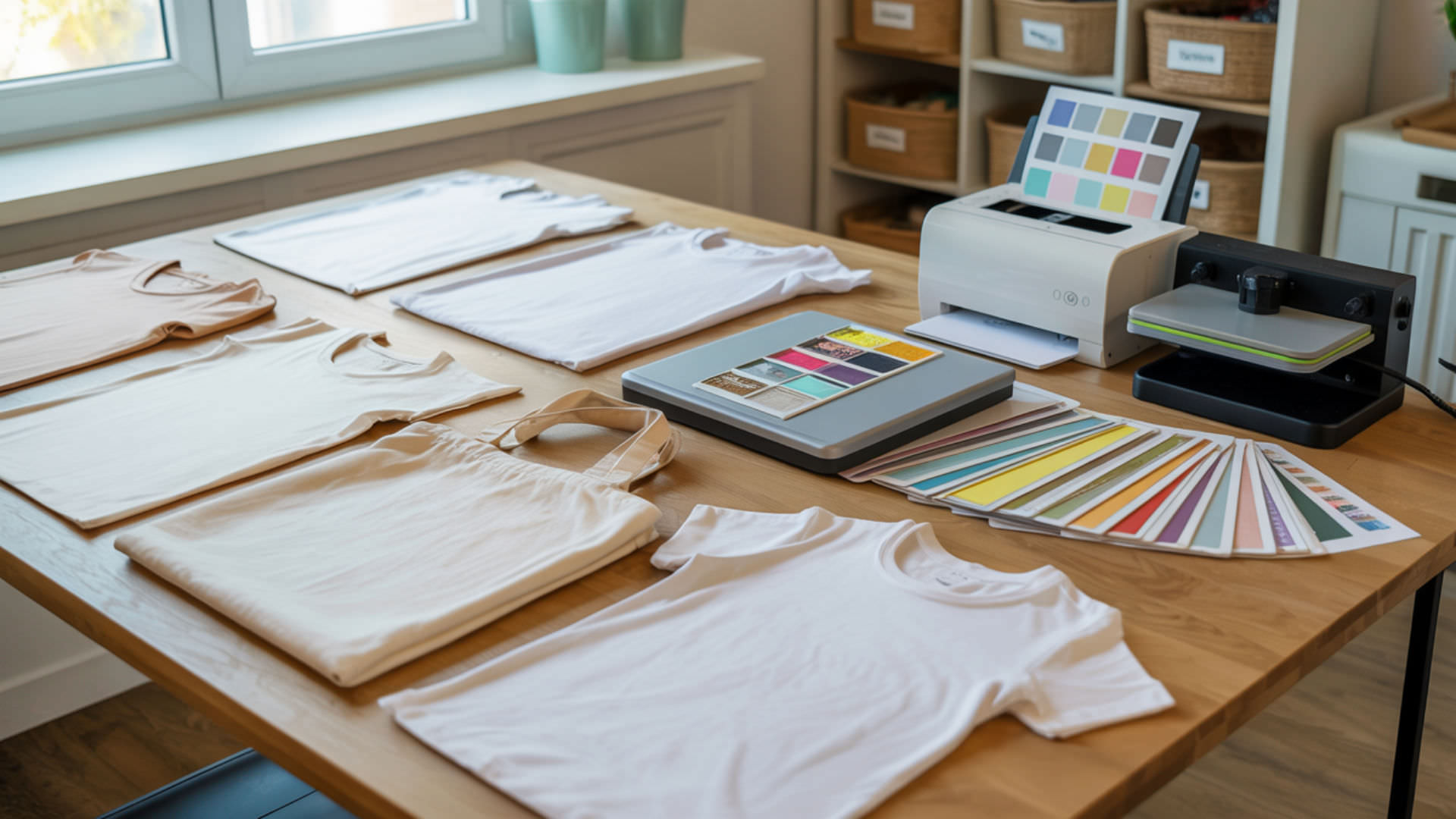Table of Contents
ToggleSublimation printer dimensions vary significantly based on model type and intended use. Inkjet printing technology defines the physical chassis housing printheads, ink tanks, and paper feed rollers. The sublimation phase transition requires compatible printers and media, explained in our guide on how sublimation works. For choosing appropriate starter models, our guide on inkjet printing options covers beginner sublimation printers. Sublimation printers are based on inkjet printer designs, where the size of the chassis is determined by internal components such as printheads, paper feed paths, and ink systems.[1]
Key Takeaways
- Desktop sublimation printers typically measure 15–20 inches wide, 12–16 inches deep, and 6–10 inches tall through inkjet printing architecture.
- Printer size correlates with media capacity—larger chassis accommodate wider paper feeds and bigger ink tank systems.
- Wide-format printers reach 44–64 inches for commercial textile and banner production requiring industrial output.
What Are the Typical Dimensions of Sublimation Printers?
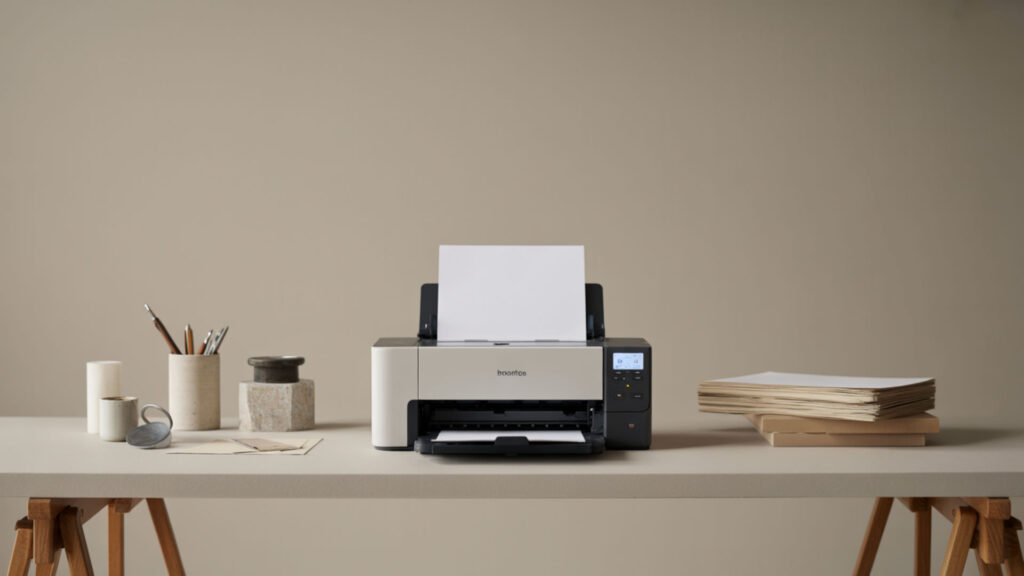
Most desktop sublimation printers measure between 15–20 inches wide, 12–16 inches deep, and 6–10 inches tall. Inkjet printing mechanisms determine chassis width for paper feed, depth for roller paths, and height for tank placement. Larger polymer-coated substrates require larger printers with expanded feed capabilities and wider platens.Substrate size and printer type affect how designs can be layered or reused, so it’s important to understand our complete guide on Can You Sublimate Over Sublimation when working with different polymer-coated materials.
What Sizes Do Common Desktop Sublimation Printers Come In?
Common desktop sublimation printers from inkjet printing manufacturers fit standard desk spaces. The Epson ET-2800 measures 14.8″ × 13.7″ × 7.0″ when stored. The Sawgrass SG500 is approximately 15.75″ × 17.25″ × 8.5″. These dimensions accommodate A4 and letter-size formats typically used for small-item sublimation projects. Printer dimensions are closely linked to paper size standards, since wider or longer media formats require larger feed paths and overall printer bodies. [2]
How Large Are Standard Home-Use Sublimation Printers?
Standard home-use sublimation printers balance space efficiency with adequate tray depth for mid-size projects. Inkjet printing units like the Epson ET-2800 expand to 14.8″ × 22.8″ × 10.0″ during operation when paper trays are extended. Plan workspace for both stored and operational footprints.
What Are the Dimensions of Compact vs Wide-Format Sublimation Printers?
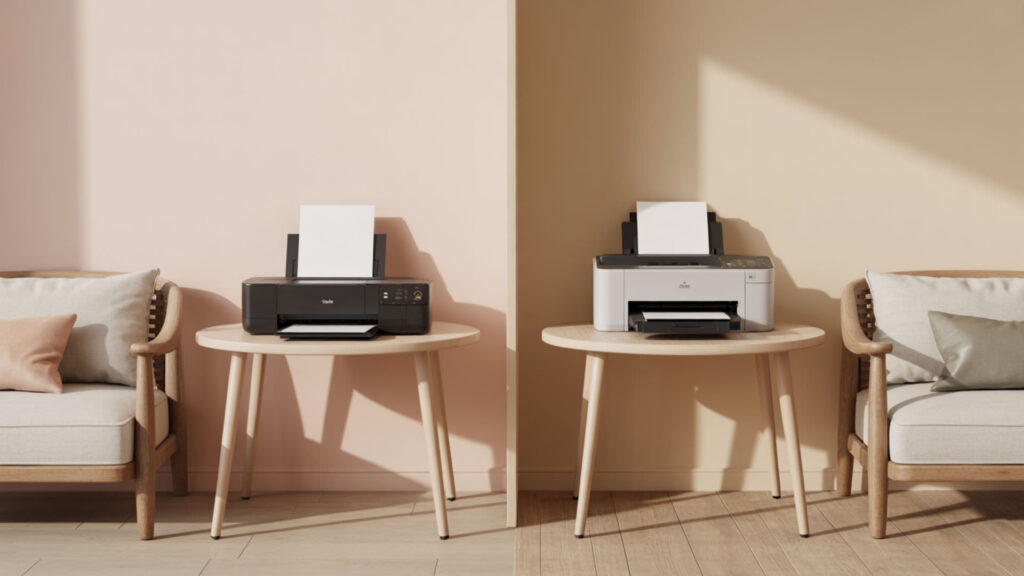
Compact and wide-format sublimation printers serve different production needs with dramatically different footprints. Inkjet printing technology scales from desk-friendly units under 15 inches wide to industrial machines exceeding 60 inches. Wide-format printers support larger heat transfer sheets requiring expanded chassis to accommodate bigger media rolls and longer feed paths.
What Are the Dimensions of Compact Sublimation Printers?
Compact sublimation printers miniaturize rollers, tanks, and motors to reduce overall footprint for small workspaces. The Epson ET-2800 at 14.8″ × 13.7″ × 7.0″ (stored) and Sawgrass SG500 fit easily on standard desks. These inkjet printing units handle paper sizes up to 8.5″ × 14″ on main trays.
⫸ Click Here For Best Selling Sublimation Printers And Products ⫷How Big Are Larger Wide-Format Sublimation Printers?
Wide-format sublimation printers expand platen width for large polymer media production. Industrial inkjet printing units like Epson SureColor F9470 or Mimaki TS100-1600 print rolls up to 64 inches wide. These machines require dedicated floor space, often measuring several feet wide and deep for textile and banner applications.
Which Types of Printers Can Be Used for Sublimation?

Sublimation requires specific inkjet printing systems with piezoelectric printheads compatible with sublimation ink chemistry. Polymer-coated substrates need printers delivering dye that bonds properly during heat transfer. Not all inkjet printers work—thermal printhead models damage sublimation ink. Epson EcoTank and dedicated Sawgrass units are popular compatible options.
Can Refillable Tank Printers Be Used for Sublimation?
Refillable tank printers like Epson EcoTank models convert easily for sublimation by replacing standard ink with sublimation ink. Inkjet printing tank systems influence chassis depth and height to accommodate larger reservoirs. The cartridge-free design makes refilling straightforward, though conversion voids manufacturer warranty on most models.
What Makes a Printer Suitable for Sublimation?
Suitable sublimation printers use piezoelectric inkjet printing technology rather than thermal printheads. The printer must deliver dye that bonds properly to polymer surfaces during heat transfer. Epson models work because piezo printheads don’t heat ink—thermal systems like HP damage sublimation ink chemistry.
How Do Sublimation Printer Size Categories Work Step-by-Step?
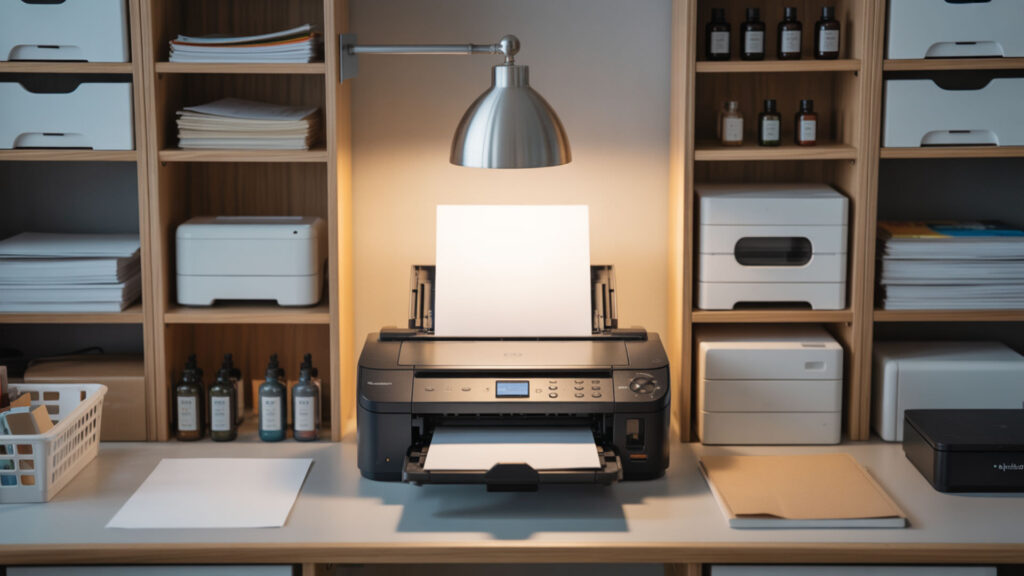
- Compact printers measure under 16 inches wide for small desktop workspaces. These handle letter-size paper (8.5″ × 11″) for small item sublimation.
- Desktop printers range from 16–21 inches wide accommodating larger paper formats. Models like Sawgrass SG1000 (21″ wide) handle tabloid-size sheets.
- Mid-format printers span 21–24 inches wide for 13″ × 19″ and larger sheets. The Epson ET-8550 reaches 20.6″ wide for expanded capabilities.
- Wide-format printers exceed 24 inches for roll-fed media production. Commercial inkjet printing units handle continuous fabric and banner output.
- Industrial printers reach 44–64 inches for large-scale textile manufacturing. Floor-standing units require dedicated production space and ventilation.
- Consider operational dimensions—printers expand significantly with trays extended. The ET-2800 grows from 13.7″ to 22.8″ deep when printing.
- Match printer category to your largest anticipated substrate sizes. Oversized prints require printers with appropriate feed capacity.
- Plan workspace for both storage and operational footprints before purchasing. Extended trays and output catchers need clearance space.
What Print Sizes Can Sublimation Printers Produce?
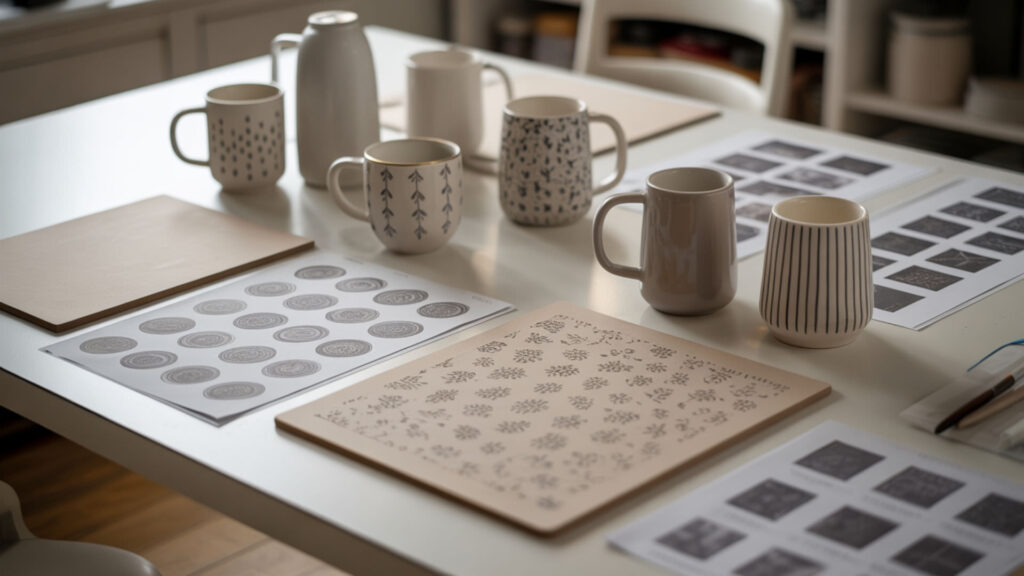
Sublimation printers produce prints from small 4″ × 6″ sheets up to full 64-inch rolls depending on model and feed system. Inkjet printing chassis size directly determines maximum printable width. Larger heat transfer applications require wider feed capability, which increases overall printer dimensions proportionally for bigger projects.
What Sizes Do Standard Desktop Sublimation Printers Support?
Standard desktop sublimation printers support paper from 4″ × 6″ up to 8.5″ × 14″ (legal size) through main feed trays. Inkjet printing determines maximum printable width—most desktop units max out at 8.5 inches. The Sawgrass SG500 extends to 8.5″ × 51″ using bypass tray.
What Paper Sizes Work with Small and Mid-Size Sublimation Printers?
Small sublimation printers handle A4 (8.27″ × 11.69″), letter (8.5″ × 11″), and legal (8.5″ × 14″) formats. Mid-size inkjet printing units like the Epson ET-15000 accommodate up to 13″ × 19″ sheets for larger tumbler wraps and all-over shirt prints.
What Are Compact and Portable Sublimation Printer Options?

Compact sublimation printers like the Epson ET-2800 or Sawgrass SG500 are ideal for small spaces or home-based businesses. Inkjet printing portable units reduce tank and motor space to achieve smaller bodies. Some handheld options exist for travel and event printing applications on small custom items.
What Are the Dimensions of a Small Sublimation Printer?
Small sublimation printers built around low-volume inkjet printing roller paths typically measure under 15″ × 14″ × 8″. The Epson ET-2800 at 14.8″ × 13.7″ × 7.0″ (stored) represents typical compact dimensions. These fit easily on standard desks with minimal footprint requirements.
How Big Is a Typical Portable Sublimation Printer?
Portable sublimation printers integrate compact inkjet printing printheads for mobility, typically measuring under 12″ × 10″ × 5″. Units like small Epson PictureMate models or handheld printers serve travel and event applications. Portability limits paper capacity and maximum print size to smaller custom items.
Ready to Choose the Right Size Sublimation Printer?
Selecting the right sublimation printer size means matching printer footprint to your project scale and workspace constraints. Inkjet printing technology offers options from compact desktop units to industrial wide-format machines. For specific model recommendations based on inkjet printing capabilities, our sublimation printer setup guide provides detailed comparisons.
Frequently Asked Questions
What are the dimensions for a 20 oz sublimation tumbler?
A 20 oz sublimation tumbler typically measures 8-1/8″ height × 2-7/8″ diameter. The tumbler wrap dimensions for this size are approximately 9.35″ × 8.25″. Always measure your specific tumbler since dimensions vary slightly between manufacturers—add small overlap for seamless wrap edges meeting without gaps.
What are the dimensions of a 30 oz sublimation tumbler?
A 30 oz stainless steel sublimation tumbler blank typically measures 3.93″ wide × 7.87″ tall. These larger tumblers require wider wrap designs than 20 oz versions. Confirm exact dimensions with your blank supplier since measurements vary between straight and tapered tumbler styles.
What are the dimensions for a 12 oz sublimation tumbler?
A 12 oz sublimation tumbler measures approximately 2.9″ wide × 5.1″ tall. These smaller tumblers work well with compact desktop printers since wrap designs fit easily on letter-size paper. The reduced size makes them popular for children’s drinkware and gift sets.
What are the dimensions of a 20 oz tumbler wrap?
Standard 20 oz tumbler wrap dimensions are approximately 9.35″ wide × 8.25″ tall, though exact measurements vary by manufacturer. Width ranges from 9.3–9.35 inches; height from 8.15–8.25 inches. Add small overlap to width ensuring edges meet without gaps. Always test print before final production runs.
What are the dimensions of a 15 oz mug?
A 15 oz sublimation mug typically measures 4.58″ tall × 3.37″ wide at the widest point. Standard mug wrap dimensions for this size are approximately 9″ × 4″ for the printable area. These generous mugs accommodate larger designs than standard 11 oz versions.
References
- Inkjet printing. (2025, December 5). Wikipedia, the free encyclopedia. Retrieved January 2, 2026, from https://en.wikipedia.org/wiki/Inkjet_printing
- Paper size. (2025, December 24). Wikipedia, the free encyclopedia. Retrieved January 2, 2026, from https://en.wikipedia.org/wiki/Paper_size




